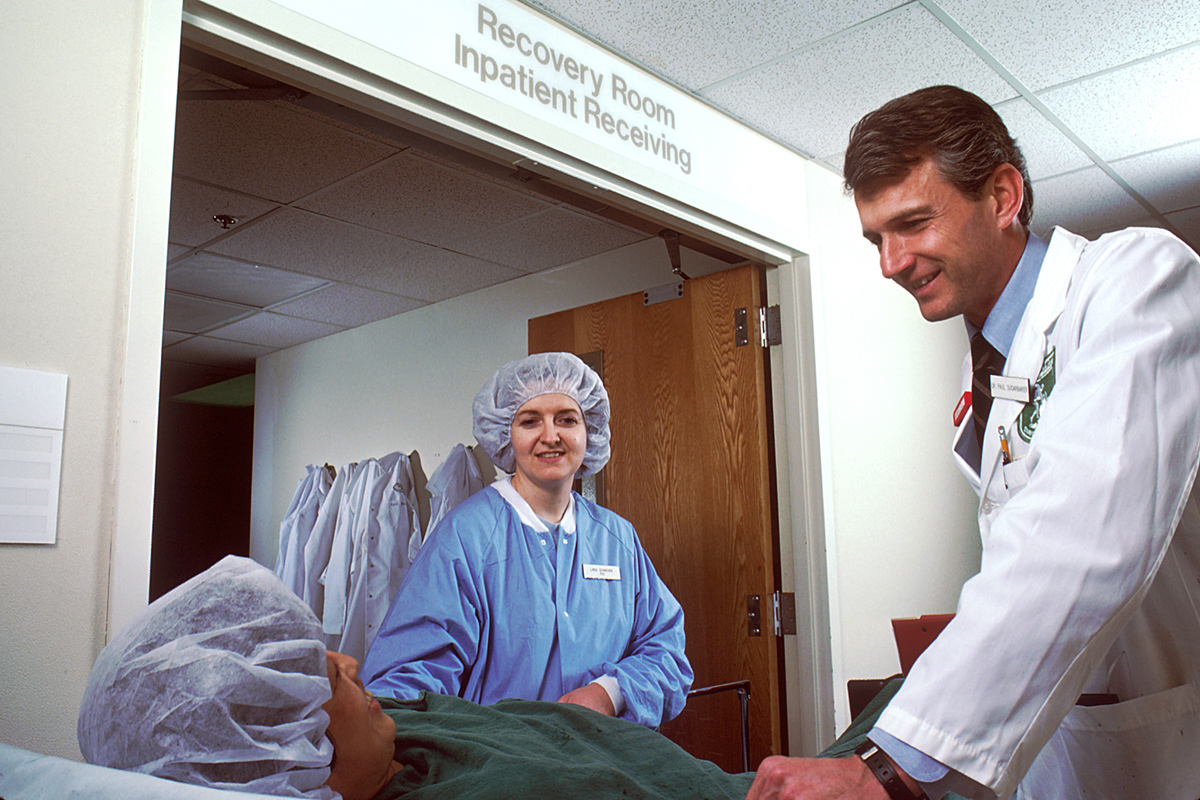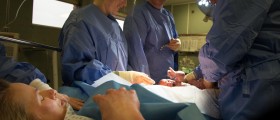Within the Pelvis
Bladder and uterus in women rest above the vagina and are held there by what might be described as a net, made of muscles ad ligaments. If these suffer too much wear and tear, the bottom of the uterus, the rear end of the bladder, or even both might fall through the supportive net far enough to protrude through the vaginal opening.
If the uterus sagged in such a way, it is referred to as uterine prolapse, while sagging of the bladder is known as vaginal prolapse.
What Causes It?
All kinds of stresses can strain the supportive muscles and ligaments, but what has the most impact on them is childbirth, and prolapse is more likely to occur in women who gave birth by vaginal delivery several times.
Other common causes for prolapse are frequent constipation, which requires straining to defecate, o chronic cough, which also strains muscles and ligaments in the pelvis. Problems worsen in postmenopausal women, as low levels of estrogen related to it do not provide sufficient 'stay in shape' signals for the supportive net, and it weakens further.
It is assumed that uterine and bladder prolapse will affect fifty percent of women in the years that follow childbirth, while the intensity of the problem may vary.
Mild cases might cause no symptoms at all, while more severe cases may have symptoms such as pain in the pelvic region and lower abdomen, vagina, and lower back, which worsens during intercourse or menstruation, pressure in the vaginal area, urine leakage, frequent infections of the urinary tract, and other symptoms.
Prolapse Prevention
There are some simple procedures to follow if you wish to decrease the risk of uterine and bladder prolapses. Primarily, avoid lifting heavy objects and strain if unnecessary.
Quit smoking so that you avoid chronic cough. As surplus weight burdens the pelvic region, try to maintain a heavyweight. Estrogen supplements for postmenopausal women might help, but you should consult your doctor before you begin such a form of therapy.
Treatment
Surgical treatment can be performed through the vagina or through the abdomen. The goals of surgery are to put these organs back in place in order to relieve pain, restore normal urination and defecation, and restore the ability to have sex.
- Uterine trial - 563 out of 565 randomised women had uterine prolapse surgery. Vault trial - 208 out of 209 randomised women had vault prolapse surgery.
- Uterine trial - adjusting for baseline and minimisation covariates, the mean Pelvic Organ Prolapse Symptom Score at 12 months for uterine preservation was 4.2 (standard deviation 4.9) versus vaginal hysterectomy with a Pelvic Organ Prolapse Symptom Score of 4.2 (standard deviation 5.3) (mean difference -0.05, 95% confidence interval -0.91 to 0.81).
- Serious adverse event rates were similar between the groups (uterine preservation 5.4% vs. vaginal hysterectomy 5.9%; risk ratio 0.82, 95% confidence interval 0.38 to 1.75). There was no difference in overall prolapse stage. Significantly more women would recommend vaginal hysterectomy to a friend (odds ratio 0.39, 95% confidence interval 0.18 to 0.83).
- Uterine preservation was £235 (95% confidence interval £6 to £464) more expensive than vaginal hysterectomy and generated non-significantly fewer quality-adjusted life-years (mean difference -0.004, 95% confidence interval -0.026 to 0.019). Vault trial - adjusting for baseline and minimisation covariates, the mean Pelvic Organ Prolapse Symptom Score at 12 months for an abdominal procedure was 5.6 (standard deviation 5.4) versus vaginal procedure with a Pelvic Organ Prolapse Symptom Score of 5.9 (standard deviation 5.4) (mean difference -0.61, 95% confidence interval -2.08 to 0.86).
- The serious adverse event rates were similar between the groups (abdominal 5.9% vs. vaginal 6.0%; risk ratio 0.97, 95% confidence interval 0.27 to 3.44). The objective anterior prolapse stage 2b or more was higher in the vaginal group than in the abdominal group (odds ratio 0.38, 95% confidence interval 0.18 to 0.79).
- There was no difference in the overall prolapse stage. An abdominal procedure was £570 (95% confidence interval £459 to £682) more expensive than a vaginal procedure and generated non-significantly more quality-adjusted life-years (mean difference 0.004, 95% confidence interval -0.031 to 0.041).
Prolapse is usually not a threatening condition, and the postoperative prognosis is often good, and patients can very soon return to normal daily activities within a matter of weeks.


















Your thoughts on this
Loading...